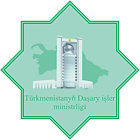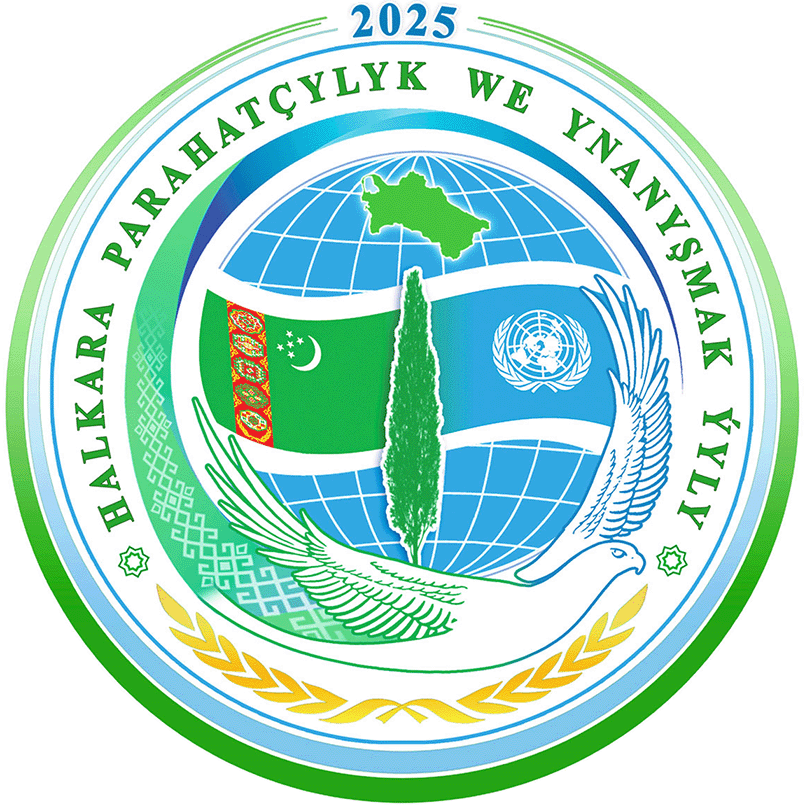of Peace and Trust»




On March 27, 2024, the International Scientific Conference “Ancient Culture of Anau” was held in the House of Culture of the city of Anau, Ak Bugday etrap, Ahal velayat, and became one of the main events on the occasion of the proclamation of the city as the Cultural Capital of the Turkic world in 2024.
As it is known, this decision was made unanimously following the 39th meeting of the Permanent Council of Ministers of Culture of the member countries of the International Organization of Turkic Culture (TURKSOY).
Famous historians, archaeologists, ethnographers, orientalists, eminent professors and young scientists, as well as representatives of museums from foreign countries, including the USA, Russian Federation, Germany, Turkey, Iran, Pakistan, Azerbaijan, Belarus, Kazakhstan, Kyrgyzstan, Uzbekistan were invited to participate in the event.
In the framework of events, numerous guests took part in the celebrations that were on the eve in honor of awarding the city of Anau with the status of the Cultural Capital of the Turkic world this year. Moreover, visited open-air monuments: the ancient fortress of Anau and the Seyit Jemaletdin mosque - the famous architectural complex “House of Beauty” with unique tiled ornaments.
Exactly to this ancient culture, the President of Turkmenistan Serdar Berdimuhamedov dedicated his new book, «Änew – müňýyllyklardan gözbaş alýan medeniýet» («Anau - a culture originating from thousands of years»), which was published literally the other day.
This work became a symbolic gift to the Turkmen people this year, which is dedicated to the 300th anniversary from the birth of Magtymguly Fragi and was declared, by decision of TURKSOY, the year of this great poet and thinker of the Turkic world.
As the part of the plenary session, those who gathered listened to the memoirs of Lisa Pampelli, the great-granddaughter of the legendary Raphael Pampelli, thanks to whom the culture of Anau gained worldwide fame and constantly entered into scientific terminology.
The discoveries made during archaeological excavations he conducted in 1904 were stunning for that time. Having determined the development of archeology for decades to come, they are still of a great importance for the study of human history.
As it was noted in the presentation, the Anau mounds consist of several layers of human activity, each of which contains unique features of its era. The discovery of remains of wheat and barley cereals became a sensation, confirming that ak bugday (white wheat) was selected precisely in Anau.
Then the President of the International Turkic Academy Shahin Mustafayev, the President of the International Foundation for Turkic Culture and Heritage Aktoty Raimkulova, the President of the «Republic of Korea-Central Asia Friendship Association» Lee Ok Ryong and others also expressed gratitude to the Turkmen side for the hospitable welcome and organization of the current events. Moreover, it will become a significant involvement not only to the popularization of the rich historical and cultural heritage of the Turkmen people, but will also become an important contribution to the further strengthening of the bonds of friendship and brotherhood between the Turkic-speaking people.
At the end of the plenary session, the work of the conference continued in two sections: «Study and research of the culture of Anau in the Epoch of the Revival of a new era of a powerful state» and «Culture of Anau in the ancient and Middle Ages»
As noted in the reports, the study of the monuments of this early agricultural culture began at the end of the 19th century, when for the first time in 1886, the head of the Transcaspian region, General A.V. Komarov, drew attention to two high hills not far from the Anau fortress.
Открытие культуры Анау имело весьма важное значение не только для Туркменистана, но и для изучения истории земледельческой культуры всего Древнего Востока.
The discovery of the Anau culture was essential not only for Turkmenistan, but also for studying the history of agricultural culture of the entire Ancient East.
In the late 1990s and early 2000s, archaeological research on the Northern Hill of Anau was carried out by a Turkmen-American expedition led by the famous archaeologist Fredrik Hiebert, which resulted in the publication of a special scientific monograph.
Becoming another honored guest of the current conference, this researcher emphasized the exceptional significance of the innovative, scientifically advanced research of Professor Raphael Pampelli during his excavations at the site of Anau. It was notable that recent archaeological work here and in the Central Kopetdag has fully confirmed their correctness - the Ahal region was an important center of one of the developed and unique ancient civilizations in Eurasia.
Deputy Director for Scientific Work of the Institute of the History of Material Culture of the Russian Academy of Sciences Natalya Solovyova, in turn, noted that the territory of Turkmenistan has been a main center of cultural genesis since ancient times. It is where an epochal change in cultural standards took place, the interaction of different worlds reflected in the colossal number of archaeological monuments of world significance, which attracted the attention of researchers from all over the world.
In particular, excavations carried out jointly by Russian and Turkmen specialists not only contribute to the success of archaeological science, but also serve to further strengthen cultural and humanitarian ties between Russia and Turkmenistan.
International recognition of the highest value of the cultural heritage of our country is evidenced by the fact that Turkmen monuments - Ancient Merv, Kunya-Urgench and Nisa - were included in the UNESCO World Heritage List.
It is generally agreed that Anau, also one of the greatest archaeological sites of Turkmenistan, should be preserved as an evidence of the ancient culture of the region.
Thus, in the place where, according to indisputable evidence of scientists, the ancient center of irrigated agriculture was located, the first and only wheat museum in the world was opened in July 2005 - the National Museum «Ak bugdaý».
The most important exhibit of the unique collection composed here is the grains of wheat discovered in 1904 by the expedition of Raphael Pampelli, grown on Turkmen soil in the 5th millennium BC, which means seven thousand years ago.
It is noteworthy that today here, at the National Museum «Ak bugdaý», as part of the celebrations that have started on the occasion of the proclamation of Anau as the cultural capital of the Turkic world in 2024, another conference was held with the participation of the Heads of States and national museums of the TURKSOY member countries.
As noted, due to its advantageous geographical position, the territory of modern Turkmenistan from time immemorial was the intersection of trade routes and cultural traditions of the West and East, an important link of the Great Silk Road, as well as the land that gave the world great scientists, philosophers and poets.
In the new historical era, our country is once again demonstrating its special role, fulfilling a responsible mission - to promote mutual understanding and trust between people through strengthening traditional cultural ties.
The formation of a state ideology based primarily on the spiritual values of the Turkmen people remains among the priority areas of the multifaceted policy of the President of Turkmenistan Serdar Berdimuhamedov, who worthily continued the initiatives of Arkadag.
Currently, the country is doing a lot of work to thoroughly study, preserve and popularize the world’s rich national historical and cultural heritage, another confirmation of which was the fact that the city of Anau was declared the Cultural Capital of the Turkic world in 2024.
The participants of the forum expressed admiration for modern Anau, which attracts attention not only with its glorious multi-thousand-year history, but also with its beautiful appearance today.
All forum materials are published in a separate collection.

